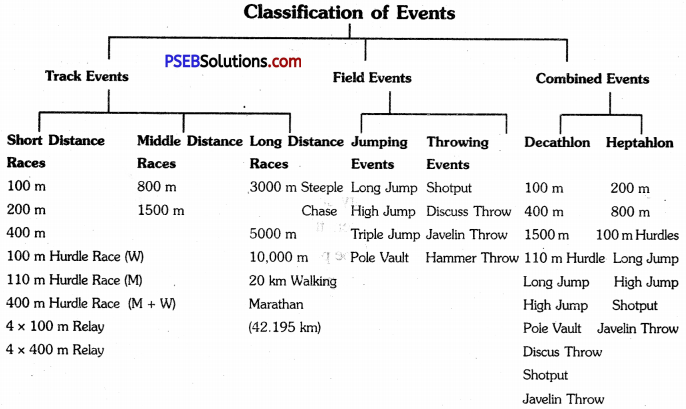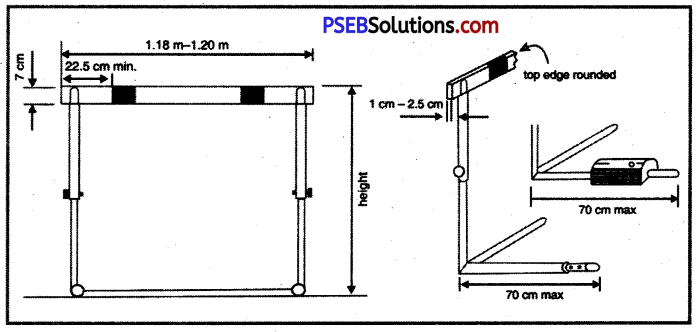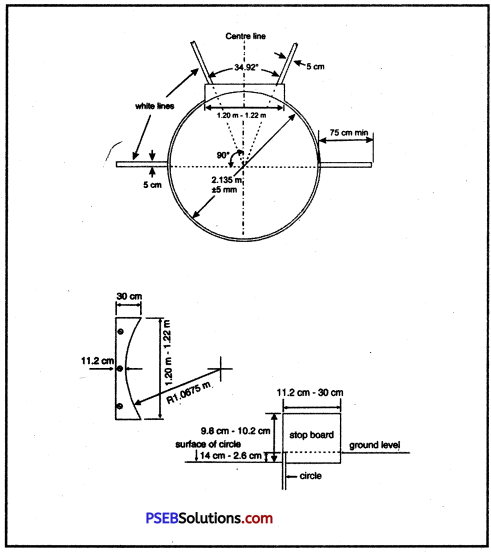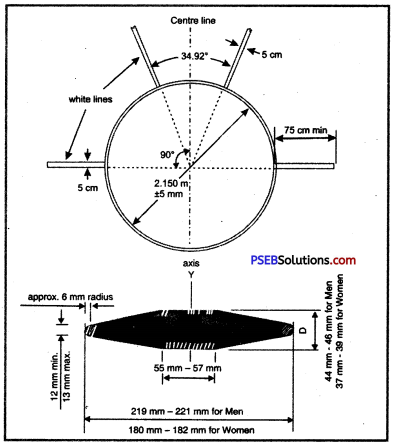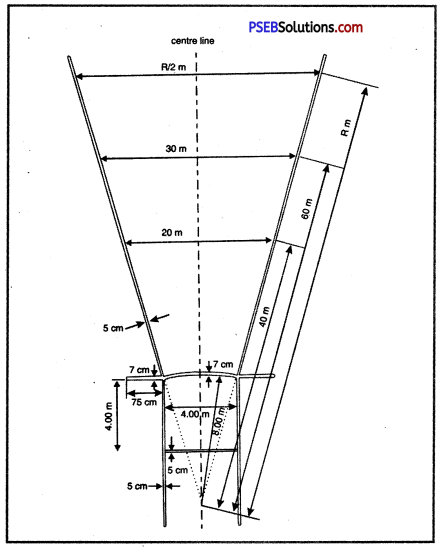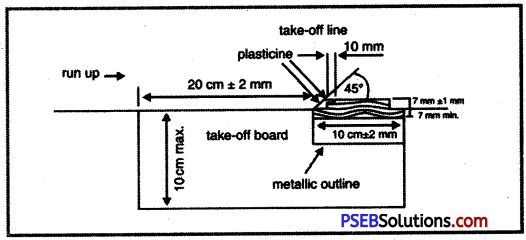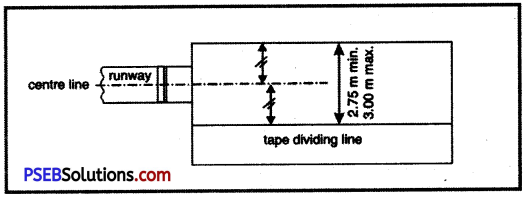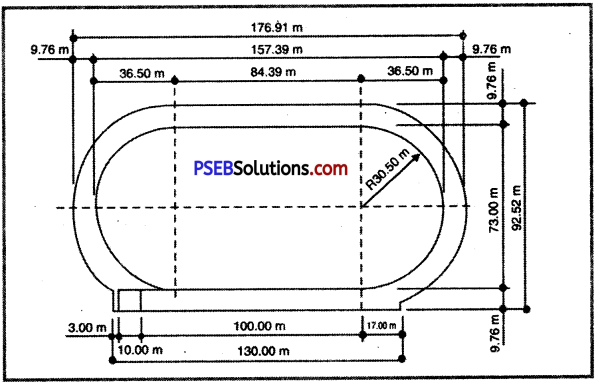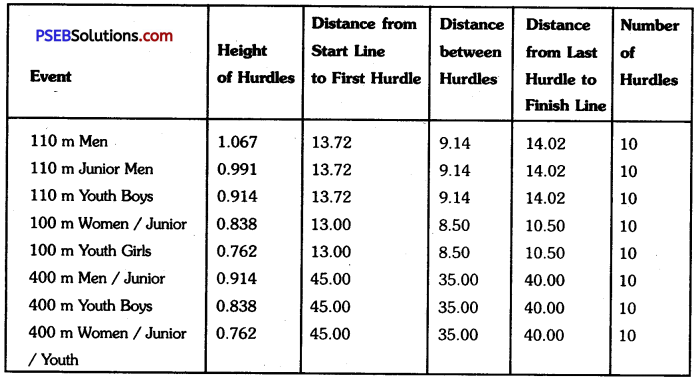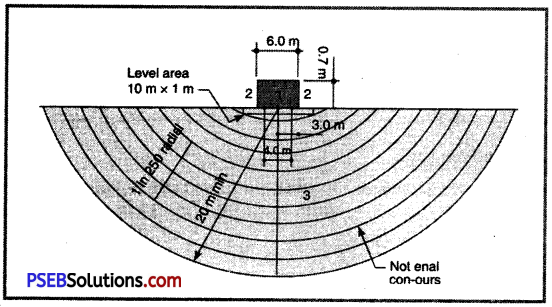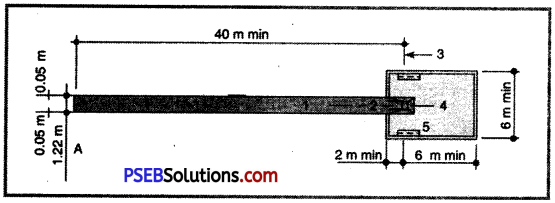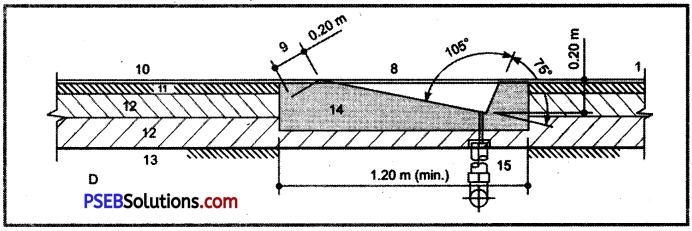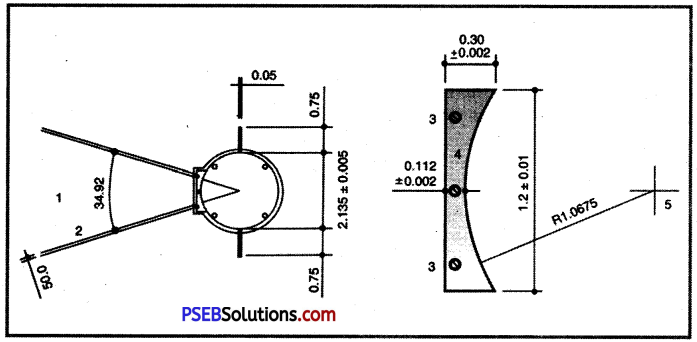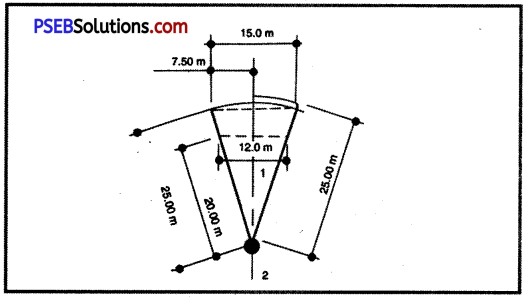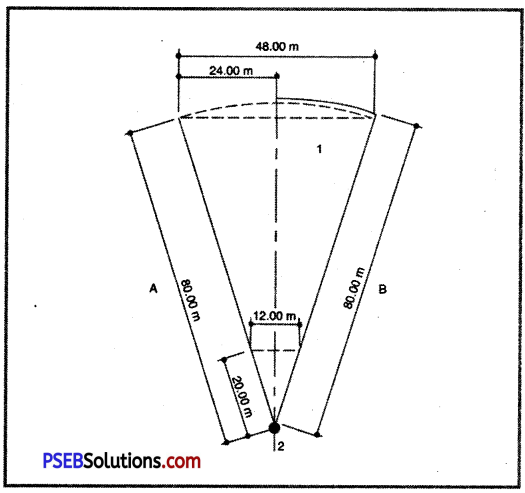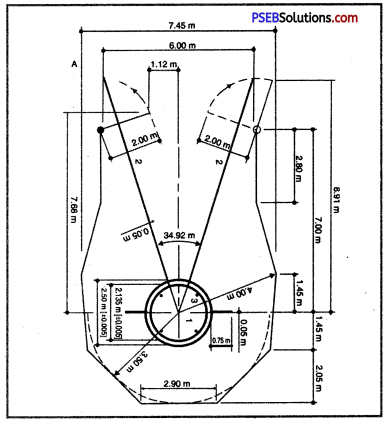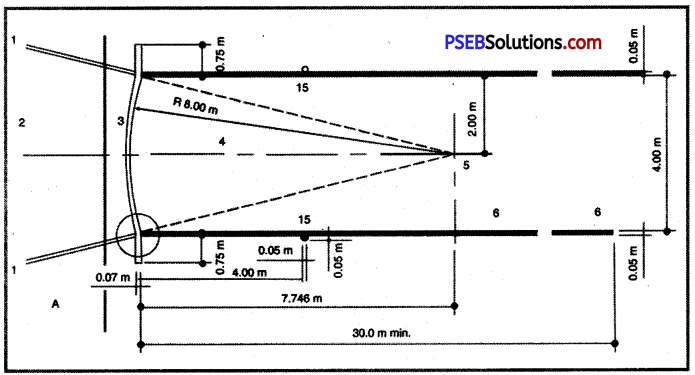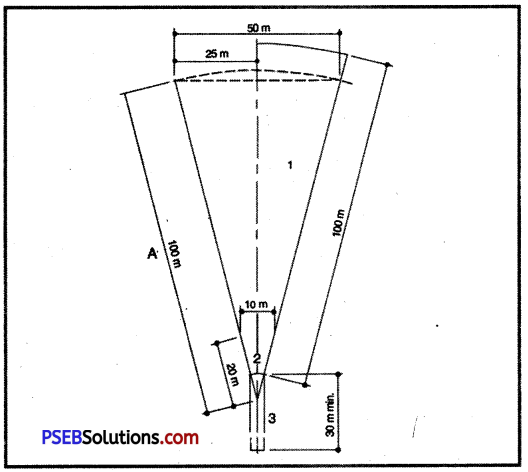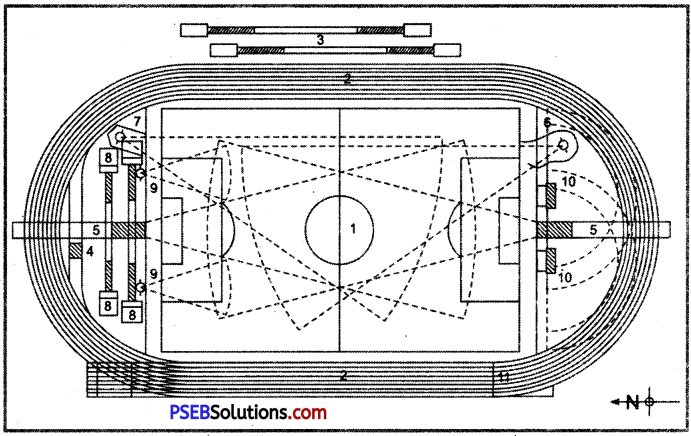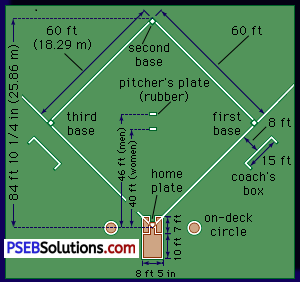Punjab State Board PSEB 12th Class Sociology Important Questions Chapter 2 Rural Society Important Questions and Answers.
PSEB 12th Class Sociology Important Questions Chapter 2 Rural Society
Multiple Choice Questions:
1. Rural society is deeply related with
(a) Nature
(b) Neighbourhood
(c) City
(d) Metro city
Answer:
(a) Nature
2. How much of the Indian population lives in villages and cities?
(a) 70% and 30%
(b) 32% and 68%
(c) 68% and 32%
(d) 25% and-75%
Answer:
(c) 68% and 32%

3. What is the main occupation of rural society?
(a) Industry
(b) Different occupations
(c) Technology
(d) Agriculture
Answer:
(d) Agriculture
4. In the Jajmani system, one who gives service is known as
(a) Jajman
(b) Praja
(c) Kammen
(d) One of these
Answer:
(c) Kammen
5. In the Jajmani system, one who takes service is known as
(a) Raja
(b) Jajman
(c) Praja
(d) Kammen
Answer:
(b) Jajman
6. Who said, “Real India lives in its villages.”?
(a) Mahatma Gandhi
(b) Sardar Patel
(c) B.R. Ambedkar
(d) Jawaharlal Nehru
Answer:
(a) Mahatma Gandhi
Fill in the Blanks:
1. Head of the village was known as ………………..
Answer:
Gramini
2. In 2011, around …………… crore people lived in villages.
Answer:
83.3
3. In …………… A.D., first book of rural people is …………….
Answer:
1916
4. Main occupation of the rural people is ……………
Answer:
agriculture
5. ……………. family exists in rural society.
Answer:
Joint
True/False:
1. Rural people mostly work in industries.
Answer:
False
2. Jajman takes the service.
Answer:
True
3. Green revolution started in 1956.
Answer:
False
4. Due to indebtedness, many farmers have committed suicide.
Answer:
True

5. Panchayat acts as the government of the village.
ATruenswer:
One Word/One Line Questions Answers :
Question 1.
How much of Indian population lives in villages?
Answer:
Around 68.84% of the Indian population lives in villages.
Question 2.
What are features of rural society given by Robert Redfield?
Answer:
Small size, distinctiveness, homogeneity, self-sufficiency.
Question 3.
How much of the rural population is engaged in agriculture or related occuptions?
Answer:
Around 75% of rural population is engaged in agriculture or related occupations.
Question 4.
How many people in 2011, lived in villages?
Answer:
In 2011, out of total population of 121 crore, around 83.3 crore people lived in villages.
Question 5.
What was the most important event in the history of rural sociology?
Answer:
The establishment of Country Life Commission in U.S.A. was the most important event in the history of rural sociology.
Question 6.
When and who published the first book of rural sociology?
Answer:
J.N. Gillettee in 1916 published the first book of rural sociology.
Question 7.
Name few of the important scholars related with rural sociology.
Answer:
S.C. Dubey, Oscar Lewis, M. N. Srinivas, Marroitt, Bailey, Gough, KL.Sharma, Andre Beteille etc.
Question 8.
How is rural population in comparison with urban society?
Answer:
Rural population is quite less in comparison with urban society.
Question 9.
What type of relations rural people have with each other?
Answer:
Rural people have quite close and face to face relations with each other.

Question 10.
Which type of family exists in rural society?
Answer:
Joint family exists in rural society.
Question 11.
What is joint family?
Answer:
That family whose three generations live under a common roof and they eat in a common kitchen.
Question 12.
Which type of marriage is available in rural society?
Answer:
Monogamy i.e. one male can marry with one female at a given time.
Question 13.
When did 73rd Constitutional Amendment take place?
Answer:
73rd Constitutional Amendment took place in 1992 A.D.
Question 14.
Which is the smallest political unit in rural areas?
Answer:
Panchayat is the smallest political unit in rural areas.
Question 15.
Name the three levels of Panchayat Raj System.
Answer:
Panchayat at village level, Block Samiti at block level and Zila Parishad at district level.
Question 16.
What are the major issues of rural areas?
Answer:
The problem of indebtedness and impacts of green revolution.
Question 17.
What is indebtedness?
Answer:
When one person takes loan from another on interest to do any work it is known as indebtedness.
Question 18.
What is meant by HYV Seeds?
Answer:
HYV seeds are High Yielding Variety Seeds.
Question 19.
Who is known as the father of green, revolution in India?
Answer:
Prof. Swaminathan is known as the father of green revolution in India.
Question 20.
What is the full form of IADP?
Answer:
Intensive Agriculture District Programme..
Question 21.
When was green revolution started?
Answer:
Green revolution started in 1966.
Question 22.
Name few important elements of green revolution.
Answer:
HYV seeds, fertilizers, pesticides, machines, new means of irrigation etc.
Question 23.
Give one feature of Rural society.
Answer:
Rural society is small in size and social uniformity is there in it.
Question 24.
What according to Pannikar is the strong base of Indian social system?
Answer:
According to pannikar, caste system, rural life and joint family system are the bases of Indian social system. .
Question 25.
Who are known for their deceiveness in rural areas?
Answer:
Money lenders are known for their deceiveness in rural areas.

Question 26.
Give one result of Indebtness.
Answer:
A peasant comes under debt trap and finally money lender captures his land.
Question 27.
The production of which crops was increased with Green Revolution in Punjab?
Answer:
The production of Wheat and Rice was increased with Green Revolution in Punjab.
Very Short Answer Type Questions:
Question 1. Rural Society.
Answer: Rural society is the society which lives quite close to nature, whose people’s main occupation is agriculture, where people have close relation with homogeneity, who live in a particular geographical area and are self-dependent in all aspects.
Question 2.
Two features of rural society.
Answer:
- Rural society is small in size in comparison with urban society and their population is quite less.
- People living in rural areas have close relations with each other.
Question 3.
Caste Panchayat.
Answer:
During earlier times, there existed caste system and each caste had its own panchayat which solved its problems. This caste panchayat had all the powers of giving justice and to impose fine.
Question 4.
Joint family.
Answer:
Joint family is a type of family in which people of three generations live under one roof, eat in a common kitchen and all the members have equal rights on the property of family.
Question 5.
Panchayat.
Answer:
At village level, a local self-govt, is established.which is known as Panchayat. Its members are elected by the village gram sabha and panchayat is elected for five years. Panchayat is responsible for the development of village.
Question 6.
Endogamy.
Answer:
When an individual needs to marry within a particular group, it is known as endogamy. According to ancient rules, an individual was required to marry within his caste or sub-caste or he was thrown out of caste.
Question 7.
Exogamy.
Answer:
When a person needs to marry out of a particular group it is called exogamy. According to this rule, one needs to marry out of his family, kinship, gotra, etc. as they all are his blood relatives.
Short Answer Type Questions:
Question 1.
Rural Society.
Answer:
Rural society is that area where technology is scarcely used, primary relations are very important, small in size and where most of the population depends upon agriculture. In this way rural community is that community which lives at a definite place, which is small in size, which has very close relations in its members and primary relations exist in it. People know each other very well and the main occupation of the people is either agriculture or agriculture-related occupation.

Question 2.
Two definitions of Rural Society.
Answer:
1. According to R.N. Mukherji, “A village is that community which is characterized by relative homogeneity, informality, prominence of primary groups, lesser density of population and agriculture as the main occupation.”
2. According to Peake, “The village community consists of a group of the related or unrelated persons larger than a single or unrelated persons, larger than a single family occupying a large house or a number of dwellings placed closed together, sometimes irregularly, sometimes in a street and cultivating originally in common a number of fields, dividing the available meadow land between them and pasturing their cattle upon surrounding waste land over which the community claims right as far as the boundaries of the adjacent community.”
Question 3.
Rural Society—Main occupation Agriculture.
Answer:
The main occupation of the tribal society is either agriculture or any of the related work because they are very much closely related with nature. Because they are closely related with nature, that’s why their views towards life are very much different. Yet many other occupations, like carpenter, blacksmith etc, are there in villages but they also make tools related with agriculture. Land is considered as a very important thing in tribal society and people like to live here because their life depends upon the land. Even the economic system and development of people and villages depend upon agriculture.
Question 4.
Rural Society—Scarcity of population and Homogeneity.
Answer:
Population of villages is very less as compared to urban areas. People are living in small groups and very much away from each other and these groups are known as villages. There are very less occupations in rural areas except agriculture because of which people like to go to cities to earn money and that’s why population in villages is very less. People have close relations with each other and their views are also same due to same occupation of agriculture. Customs, rituals, traditions etc. of rural people are common and there is hardly any. difference in their economic, moral and religious life. People in village are coming to live from far off places but they are the original inhabitants of villages or are living in the nearby areas. That? is why people have homogeneity among themselves.
Question 5.
Rural Society-Importance of Neighbourhood.-
Answer:
Neighbourhood has great importance in rural society. Main occupation of the people is agriculture in which they get enough pleasure time. This occupation hardly needs much time. That’s why people meet each other, talk with each other and co-operate with each other. People have very close relations with their neighbours. Neighbours generally are of same caste because of which their status is also same. People generally like to give respect to their neighbour. They come to help very quickly in each other’s problems. That’s why neighbourhood is of great importance in rural society.
Question 6.
Rural Family and Control of Family.
Answer:
Person is in complete control of the family in rural societies. Generally patriarchal families are there in the villages and every type of decision of the family is being taken by the head of the family. Division of labour in villages is being done on the basis of sex. Males are either doing agriculture or are going out of the house to earn some money and females are taking care of the house by living in the house. A joint family system is there in villages and a person adopts the traditional occupation of the family. Every member of the family works with each other and that’s why they have community feeling in them. Family is known as primary group. Younger ones like to give respect to elders. They have a great sense of co-operation due to same occupation. All the members of the family take part in all the festivals and religious activities. Person always takes the advice of the family before doing anything. In this way the family has complete control over its members.
Question 7.
Rural Society and closeness with Nature.
Answer:
Because the rural people live away from the artificial atmosphere, that’s why these people are very much close to nature. Their main occupation is agriculture and that’s why they are directly related with nature. Their life also depends upon nature. They worship Sun God, Varun, Indra etc. These people are very much afraid of natural forces like rain, flood, earthquake etc. because their agriculture depends upon these things. These forces can destroy their hard work of the whole year. That’s why these people are traditional and their outlook is also limited.

Question 8.
Rural Society—Lower Status of Women.
Answer:
Status of women is very low in villages because females are limited only to household functions. The division of labor in villages in ancient time was based on sex. Females were doing household work and males were doing work out of the house. Yet the time is changing and people are sending their girls to schools but still their point of view towards women is the same.
Question 9.
Changes which are coming in Rural Society.
Answer:
- Differences in urban and rural societies are decreasing.
- Changes in the structure of agriculture and commercialization of agriculture.
- Decreasing effect of religion.
- Effect of technology has been increased.
- Dependence on nature of farmers has been decreased.
- Level of education is increasing.
Question 10.
Rural Society—Decreasing impact of Religion.
Answer:
Rural people were under great impact of religion in ancient times. Every type of agricultural activity was under the influence of religion but now this thing remains no more. In earlier times, trees, birds and animals were considered as sacred but now this has been reduced. Many changes have come in the religious beliefs, customs, traditions etc. of rural people. New generation hardly accepts these things. Daily life, in today’s technological age, is moving away from the influence of temples and gurudwaras.
Question 11.
Rural Family.
Or
Joint Family.
Answer:
Rural families are generally patriarchal and joint families. Father has the complete authority in rural family and all the members of rural family live in one house. Due to living in one house they make food in one kitchen and community feeling is too much. In this way joint families are there in rural societies in which members of many generations are living. These are large in size and every one has equal right over the property.
Question 12.
Rural Family—Patriarchal Family.
Or
More powers of father in Rural Family.
Answer:
More powers of father. Father has more powers in rural family. Father is wholly incharge of the family. Many functions of the family are there which are being done by father with his will, like division of labour on the basis of sex and age, marriage of children, taking care of income and house etc. Father has so much influence on the family that not even a single member can speak against him. Rural family is exactly opposite to the Urban family where every member of the family has its own importance.
Question 13.
Characteristics of Rural Family.
Or
Write four features of Joint Family.
Answer:
- Rural families are quite large in size.
- Rural families depend upon agriculture.
- More community feeling or unity is there in rural families.
- More interdependence and discipline are there in rural families.
- Father has more rights in it.
- The person has more participation in family functions.
- Such families have a common kitchen, house etc. and they share family property within themselves.
Question 14.
Rural Familism.
Answer:
Family is a very important unit in the rural social structure. Every type of institution, which prevails in villages, is greatly influenced by rural families. That’s why the family has more importance in rural society as compared to an individual. It is known as Familism. When the whole family is given importance as compared to one or two persons then it is known as familism. Some sociologists are of the view that in agriculturalist societies, social and political organizations has the features of the family because family is the basic and most important unit in rural society. Influence of familial traits over social organizations of rural society are made according to the political organization is known as Familism.

Question 15.
Rural Marriage.
Answer:
Marriage, in rural society, is not a contract but is considered a religious sacrament. Marriage, in villages, is being done in the traditional way and with complete rituals and customs. Gods and Goddesses are worshiped before marriage. Boy takes his Baraat to girl’s house and many rituals and customs are being performed related with marriage, with this marriage are completed. Yet these customs and rituals are decreasing in urban areas but rural societies are used to performing marriage with all customs and rituals. We can’t see the great pomp and show of cities in rural marriage but it is performed with complete traditions.
Question 16.
Rural Marriage is a Religious Sacrament.
Answer:
Marriage is considered a religious sacrament in rural society because its aim is religious. It has been written in religious books that a person will do marriage to make his house, to produce children, for the continuation of society, and to pay his debts. A person can pay his debts only by doing marriage and by producing children. Person in rural society has to go through many rituals from birth till death. That’s why it is considered a religious sacrament.
Question 17.
Arranged Marriage.
Answer:
Marriage in rural societies is not a relation of one male and female but is considered as the relation of two families, groups or two villages. That’s why parents play an important role in finding a mate for their children. Enough importance is given to the size, status, kinship and economic position of the family while selecting the mate of the child. With this, the personal traits of would-be mate are also given enough importance. If the child has any personal problem then it would be very difficult to find his/her mate. Parents are doing marriage of their child and they always try to do marriage with great pomp and show.
Question 18.
Rules of Mate Selection in Rural Areas.
Answer:
Kapadia has given three rules of mate selection in rural areas and these are as follows :
- The field of selection
- Parties for selection
- Criteria of selection.
Question 19.
Village Exogamy.
Answer:
According to the rule of village exogamy members of one village cannot marry each other. A person has to marry out of his village. It is considered that all the citizens of a village are the children of one parent. Citizens of one village are considered as the relatives of each other. We can listen commonly in the villages of Punjab that sister or daughter of village is the sister or daughter of every one. That’s why a person has to marry out of his village. It is“known as village exogamy.
Question 20.
Dowry.
Answer:
Dowry. People are giving dowry to their girl at the time of marriage and this process is going on from the ancient times. At the time of marriage, parents are giving some gifts to the bridegroom and his relatives while sending their daughter to the boy’s house. These gifts are known as dowries. Every family gives dowry according to their economic status and according to the social status of the family of the bridegroom. If the economic status of the family is good then they give good dowry but if the economic status of the family is weak then they give less dowry. This custom is in great demand in modern times and it prevails equally in the whole of Indian society.
Question 21.
Rural Economy.
Answer:
The rural economy is based upon agriculture and agriculture is being done on land. That’s why land is of great importance in rural society and the rural economy. Around 70% population of our country is engaged in the occupation of either agriculture or any other agriculture-related occupation. Yet there are certain other occupations in the rural economy but agriculture is of great importance. People produce things by cultivating the land. Methods of production are still ancient. Yet farmers, in many parts of the country, are using modern technology and machines to do agriculture but still, most parts of the country are using old means of agriculture.
Question 22.
Indebtedness.
Answer:
Another important feature of the economy of Indian rural society is the indebtedness of farmers. There are many reasons behind the indebtedness of farmers. Rural families are large in size. Yet their income is less but their expenditure is more due to large family. They have to take loans on interest from money lenders to meet their needs because of which they come into the circle of indebtedness. Expenditure of agriculture has been increased to a great extent these days like rates of seeds and fertilizers have been increased, spending on diesel for pumps of irrigation due to unavailability of electricity. More expenditure on agriculture due to less rain, bad quality of production forces them to sell their produce at rates less than the minimum support price, etc. Due to these factors, farmers are unable to meet their expenditure on cultivation. That’s why they have to take loans either from banks or from money lenders. They are unable to repay their loans due to more rate of interest and slowly and slowly they come under the trap of indebtedness.
Question 23.
Jajmani System.
Answer:
The entire rural economy in the Jajmani system revolves around agriculture and farmer. Farmer has the most important place in rural economy and other castes have many related functions of agriculture. Farmer prepares the land for agriculture but other castes give their services for the completion of the whole agricultural process and they take their part from the produce of that land. The blacksmith makes the related tools of agriculture and cobler makes shoes for the farmer. The main feature of the Jajmani system is that human needs of life are fulfilled only at the local level. In this way rural economy moves in a proper way with the Jajmani system.

Question 24.
Characteristics of Rural Economy.
Answer:
- The main occupation of people in tribal economy is agriculture and life of the people depends upon this.
- Production in rural economy is being done through agriculture and the means of production are still old.
- The land is the base of every type of relation in rural economy and the farmer is the owner of the land.
- More population is there in rural areas because of which pressure on land increases for more production.
- There is a great problem of indebtedness in rural economy and farmers are always in debt of money lenders.
Question 25.
Reasons of Indebtedness in Rural Society.
Answer:
- Means of income of farmers are temporary because of which they have to take loans if any need arises.
- The population of the family of a farmer is more but income is limited because of which they have to take loan.
- Farmers have the habit to show off because of which they spend more than they need. That’s why they have to take a loan for that.
- The loan is easily available for farmers from money lenders because of which they get encouragement to take loans.
- Money lenders never let any farmer to go out of its clutches. That’s why they are rounded in this cycle of indebtedness.
Question 26.
Zamindari System.
Answer:
Zamindari system was started in the rural society of our country after the advent of Britishers. Under this system, one person or zamindar was the owner of a very big piece of land. He himself was not doing anything and was living a very luxurious life. But he used to give his land to marginal farmers for cultivation. Some portion of the production was given to the marginal farmers. In this way, he was getting a lot of money without doing anything and was living a luxurious life. This system was abolished after independence.
Question 27.
Tenancy reforms.
Answer:
Tenancy reforms. The main aims of reforms related to tenants in five-year plans were
- Security of laborers
- to decrease rent
- ownership of tenants. Even after the abolition of the zamindari system, labor was going on in large areas of the land. That’s why many steps were taken by governments of different states like the security of laborers and co-determine proper rent of land with which laborers came in direct contact with the state. These reforms were revived in the meetings of Chief Ministers in Nov. 1969 and Sept. 1970 and it was decided that more steps should be taken by the government for the improvement of position of labourers.
Question 28.
Panchayati Raj Institution.
Answer:
There are two ways for the development of the local areas in our country. Local governments are there for the development of urban areas and Panchayati Raj institutions are there for the development of rural areas. 70 % of the total population in our country lives in rural countries. That’s why the institutions which have been made for the development of rural areas are known as Panchayati Raj Institutions. It has three levels. Panchayat is there for the development at village level, Block Samiti is there for the development at block level and Zila Parishad is there for the development at district level. Its members are nominated as well as elected.
Question 29.
Gram Sabha.
Answer:
All the adult persons of the total population, of the village, are the members of Gram Sabha and it is the complete unit of the whole population of the village. This is the basic unit on which the whole structure of our democracy rests. Grain Sabha can be made in that village whose population is more than 250. If the population of one village is less than 250 then two villages can jointly make the Gram Sabha. Every adult of the village is a member of Gram Sabha, who has the right to vote. There is one chairman and some members of every Gram Sabha. It is elected for 5 years.
Question 30.
Gram Panchayat.
Answer:
Every Gram Sabha elects one Gram Panchayat from its area. In this way, Gram Sabha is an executive institution that elects members for the Gram Panchayat. It has one Sarpanch and 5-13 panches. There are certain places in panchayats that are reserved for backward classes and females. It is generally elected for 5 years but the state government can dissolve them even before 5 years if it will try to misuse its power. Government officials and mentally ill persons cannot fight the elections. Gram Panchayat solves the problems of the village and develops many things like industries, agriculture, cleanliness, means of recreation, and means of transport.

Question 31.
Functions of Panchayat.
Answer:
- The first function of Gram Panchayat is to uplift the social and economic life of the people.
- Village panchayat tries to open schools in the village and motivates the people to send their children to schools.
- Gram Panchayat also arranges for the means of a recreation like films, festivals and opening up of library in the village.
- Panchayat tells the people about new techniques of agriculture and it arranges for new seeds and developed fertilizers.
- For the industrial development of the village, it also tries to establish any industry in the village.
Question 32.
Nyaya Panchayat.
Answer:
Nature of two persons is not same. That’s why problems are arising among them. In this way problems between villagers are arising and they fight with each other. Nyaya Panchayat stops and solves these problems. One Nyaya Panchayat is generally formed for 5-10 Gram Sabhas. Its members are elected and Sarpanch makes one committee of 5 members. They have the right to ask questions to Panchayat.
Question 33.
Panchayat Samiti or Block Samiti.
Answer:
Panchayats coming under one block are the members of Panchayat Samiti and Sarpanches of these Panchayats are the members of Panchayat Samiti. Members of Panchayat Samiti are also elected. Panchayat Samiti takes care of the functions of the Panchayats which-are coming in its area. It checks the developmental functions of the village and directs the Panchayat for the welfare of the village. It is the second level of Panchayati Raj.
Question 34.
Zila Parishad.
Answer:
The highest level of Panchayati Raj is Zila Parishad which takes care of the functions of the Panchayats which are coming in the district. It is an executive institution. Chairman of Panchayat Samiti, elected members, members of Lok Sabha, Rajya Sabha, and Legislative Assemblies are the members of Zila Parishad. All these take care of the developmental functions done in the villages of the district. Zila Parishad does many functions like improvement of agriculture, improvement of land, irrigation, rural electrification, arrangement of seeds and fertilizers, education, industries, etc.
Long Answer Type Questions:
Question 1.
What is Rural Family? Explain its characteristics.
Answer:
Family keeps a very important place in rural social structure because family is of great importance in agriculturist societies. Generally, we can see many forms of families in villages but a joint family is that family which exists in all the rural societies. We can find Patriarchal joint families in every part of India. That’s why now we will discuss the joint family in rural society.
A joint family is a group in which members of many generations live with each other. It means that grand father-grand mother, mother-father, uncle-aunt, their children, wives of boys, and unmarried children live in one place.
According to Karve, “A joint family is a group of persons who generally live under one roof, who eat and cook at one hearth, who hold property in common and who participate in common worship and are related to each other as some particular type of kindred.”According to I.P. Desai, “We call that household joint family which has greater generation depth than the nuclear family and the members of which are related to one another by property, income and mutual rights and obligations.” So after looking at these definitions we can give some of the features of a joint family and these are :
- They are large in size.
- Members of this family have a sense of co-operation.
- Property in the family is common to all.
- All the members of the family live at one commonplace.
- All the economic, social, and cultural activities of the members are common in the family.
Desai was of the view that those societies, where occupations related to agriculture are more in number, have a patriarchal joint family. The joint family acts as an economic property in agricultural societies. Patriarchal rural joint family has many functional, psychological, political aspects which differentiate it from the urban family system. So from this description, it is clear that the generally patriarchal joint family exists in rural society. Characteristics of this type of family are given below : Characteristics of Rural Family
- Large in size
- Dependency upon agriculture
- More unity
- More inter-dependency and discipline
- More proudness of family
- More powers of the father
- More participation in household affairs.
Now we will explain them in detail.
1. Large in size: The first characteristic of rural family is that it is large in size because members of many generations live at one place. The increasing population of our country is responsible for its large size. Even at some places its members reach the number of 60-70. But generally one simple rural family has 6-15 members and that’s why it is large in size.
2. Dependency upon agriculture: The main occupation of the rural people is agriculture because of which all the members of rural family are engaged in agricultural activities. For example, ploughing is done by any one and any one else brings fodder for cattle. Females of the rural family work in fields because of which rural family is different from urban family. Many females give their help to the husbands in fields and work to fill the gap of labourer. Even females living at houses don’t have any leisure time. They give fodder and water to cattle. Their ideas, thinking etc. become the same because they work with each other in fields.
3. More unity: One of the important features of rural family is that it has more unity. Rural families have more unity as compared to urban families. Like husband- wife, grand father-grand son, parents have more emotional relations. If we look at the rural areas then we will come to know that rural people like to live in groups and their unity can be seen at the time of function of the family. All the members of rural family have same feelings, views, wishes, activities. They do same type of works and think in the same way. Importance of personal life is less as compared to the family. All the members live their fives according to the ideals and traditions of the family.
4. More inter-dependency and discipline: Members of rural family depend more upon each other as compared to urban families. Humans in urban areas fulfil their needs out of the family. But the economic, social, psychological, religious needs of humans are fulfilled only in the family. It is so because except family, no other means can fulfil human needs in villages and person alone cannot fulfil all of his needs. For example, no boy or girl in village can marry itself but family arranges for their marriage. Because of this more dependency family and elders have full control on their members. Younger members of the family never say no to elders for any work.
5. More proudness of family: Another important feature of the rural family is the more proudness of family. Because members of the family are interdependent and united that’s why family takes the form of a unit in which family has more importance than the member. In simple words family has more importance in rural areas than any individual member. Any work done by the member can become the proudness or black spot of the family. It is expected from every member of the family that he should maintain respect of the family. We can see example of proudness of the family that sometimes two families start fighting with each other for the respect of the family.
6. More powers of father: The father has more powers in rural family. Father is the wholly incharge of the family. Many functions of the family are there which are being done by father with his will, like division of labour on the basis of sex and age, marriage of chifdren, taking care of income and house etc. Father has so much influence on the family that not even a single member can speak against him. Rural family is exactly opposite to the urban family where every member of the family has its own importance.
7. More participation in household affairs: Another important feature of the rural family is that all the members of family greatly participate in household affairs. Members spend more time with each other due to same occupation and that’s why members of the family take part in every activity of the house: They work together in fields during day time and at home during night and that’s why they are very close to each other.
Except for these characteristics, rural families have many other characteristics like :
- Importance of religion
- Lower status of women
- Worship of ancestors
- Dominance of joint family
In this way many characteristics of rural family are given.

Question 2.
What do you know about Rural Familism? Explain it.
Answer:
Family is a very important unit in the rural social structure. Every type of institution, which prevails in villages, is greatly influenced by rural family. That’s why family has more importance in rural society as compared to an individual. It is known as Familism. When the whole family is given importance as compared to one or two persons then it is known as familism. Some sociologists are of the view that in agriculturalist societies, social and political organizations has the features of the family because family is the basic and most important unit in rural society. Influence of familial traits over social organizations feel of rural society are made according to the and political organization is known as Familism.
According to Sorokin, “Because family is the basic social institution in rural society, that’s why it is naturally expected that feature of rural family and social institutions should have influence over agricultural groups. In other words it forms the basic social relations of all the rural familial relations. Word Familism is used for these social organizations.”
In this way when political and social institutions of the village are under the influence of religion then it is known as Familism. Familism has many features which are given below :
1. Family—in the form of an ideal. Family is considered as an ideal in the society. Family has some moral measurements, religious beliefs, social concept and if any one tries to break them or tries to destabilize the family then he is being criticised by others.
2. Family—a unit of social responsibility. Family is the basic unit of any rural society. That’s why it takes all the responsibilities and pays tax collectively. Any person in the village is known by his family. No one is known personally in the family.
3. Effect of family on political institutions. Forms of political institutions in agriculturalist societies are just like a rural family. Relation of ruler and general masses is just like as the relation of head of the family with other members of the family. Head of the family is the representative of the family in the political activities of the village. Even members give their vote to that party where head of the family says so.
4. Relations of co-operation. Relations in unban societies are not full of co-operation but are contractual. Person can disconnect his relation after the completion of his work. But relations in agriculturalist societies or in rural societies are not contractual but are full of co-operation, love and sympathy. Co-operative relations come forward due to living and working with each other by believing in same views and beliefs and with unity and integrity of the family.
5. Family—A unit of production, consumption and exchange. Economic system of rural society also has the features of rural family. Production and consumption is being done in the family. It means that production, in the family, is being done according to the needs of the family and family consumes that production. Exchange in villages is being done is a very simple way. People exchange things instead of exchange of money and things. Family is also the base of the exchange.
6. Many customs. All the process of rural life in agriculturalist societies moves around the customs of the family. Customs related to every aspect of life exists in rural society and they always affect every aspect of the life of the person.
7. Dominance of ancestral worship. Religion is of great importance in rural society. All the members of the family have to obey the customs and traditions of the family. Worship of ancestors is a very important part of rural society. People worship their ancestors with the worship of gods and godesses. In this way family has its own features in those societies where familism has its dominance.
Question 3.
What is Rural marriage? Explain its features.
Or
Explain the marriage system in rural society.
Answer:
Generally marriage is considered as necessary for every one because marriage is necessary for the continuation of the society. Children without marriage are not sanctioned by society and are considered as illegal. It is quite important in agricultural societies. Marriage of children is considered as necessary in rural society. Girl child is generally considered as burden on the parents. That’s why marriage of girl child is being done at very early age. In this way marriage is the relation between male and female whose aims are to make family, establish house, produce children and continuation of the society.
Marriage is the very important stage in human life. Indian society is basically a rural society because of which marriage is considered as a family affair. Two families make relations with each other with their help and boy and girl also make relations with each other. Marriage out of the clan and marriage within the caste is considered as necessary in rural society. We can come to know about the status of two families with marriage.
Marriage, in rural society, is not a contract but is instead considered as a religious sacrament. Marriage, in villages, is being done in traditional way and with complete > rituals and customs. Gods and Goddess are worshiped before marriage. Boy takes his Baraat to girls’ house and many rituals and customs are being performed related with marriage. With this marriage is completed. Yet these customs and rituals are decreasing in urban areas but rural societies used to perform marriage with all customs and rituals. We can’t see the great pomp and show of cities in rural marriage but it is being performed with complete traditions.
In this way whichever marriage, in rural society, is being performed with all , religious sacraments, customs, traditions etc. then it is known as rural marriage. With this marriage, not only religious customs are performed but the aims of marriage i.e. sexual satisfaction and procreation of children etc. are also fulfilled.
Characteristics of Rural Marriage:
1. Religious sacrament. Marriage is considered as a religious sacrament in rural society because its aim is religious. It has been written in religious books that person will do marriage to make his house, to produce children, for the continuation of society and to pay his debts. Person can pay his debts only by doing marriage and by producing children. Person in rural society has to go through many rituals from birth till death. That’s why it is considered as a religious sacrament.
2. Related with religion. Rural marriage is always related with religion because rural marriage is being performed with complete rituals and customs. Yet these religious rituals have been decreased to a great extent but they still exist in rural society. Person has to complete many religious rituals and that’s why he has to obey many duties like to pay many debts and to do many types of ‘yajnas’. It is necessary for a person to do marriage to do ‘yajnas’ because he cannot do yajna without marriage. In this way rural marriage is related with religion.
3. Marriage to be done with complete traditions. Marriage in rural society is performed after completing all the rituals and in a traditional way. Traditions, like boy goes to the girl’s house with Baraat, all the persons in Barat are dancing, after marriage boy takes the girl to his house in ‘Doli’ and then many religious customs are to be performed there with which marriage is performed. These traditions and customs not only exist in rural society but also prevail in Hindu marriage. That marriage is not considered as a complete marriage which is not performed with all the rituals and traditions.
4. Marriage cannot be broken. Marriage, in rural society, is not considered as a contract but is considered as a religious sacrament. If it is to be considered as a contract then it can be broken at any time like urban societies. But marriage is considered as a religious sacrament in rural society which cannot be broken at any time. Marriage is considered as a bond of seven births which cannot be broken.
5. Marriage is necessary. Marriage is considered necessary in rural society because unmarried children are considered as a burden on parents. It is necessary specially for girls because if the marriage of a girl is not performed then it is considered as the parents are unable to perform their duty. It has been believed in rural society that woman should bear a child and become a mother because it is necessary for the continuation of society. Marriage of girl is considered as necessary than that of boy because there is no fear of character losing of boy but if girl will go in a wrong direction then the status of the family will become lower.
6. Arranged marriage by parents. Marriage in rural societies is not a relation of one male and female but is considered as the relation of two families, groups or two villages. That’s why parents play an important role in finding mate for their children. Enough importance is given to the size, status, kinship and economic position of the family while selecting mate of the child. With this the personal traits of would be mate are also given enough importance. If the child has any personal problem then it would be very difficult to find his/her mate. Parents are doing marriage of their child and they always try to do marriage with great pomp and show.
7. Role of Priest. Brahmin or Priest has a tfery important role in marriage. Generally, in all societies, parents are matching the Janampatri (horoscope) of their children and this work is being done by astrologer. If Janampatri matches then they start the process of marriage but if Janampatri does not match then they stop the process at once. At the time of shagun, exchange of rings take place. In marriage he has a very important role to play because he performs the marriage after completing all the rituals of marriage. He reads many religious mantras to perform marriage. In this way religious person or priest has a very important role to play in marriage. With this one important thing is there in rural marriage and that is that boy and girl cannot meet each other during the time of mangni and marriage. Yet there is no restriction regarding this in urban areas. This short span of time is considered as very special because small things can create problems and marriage can also be broken.
Rules of Mate Selection:
Question 4.
Which types of rules are there in rural society regarding mate selection?
Answer:
The major question in front of parents, in any society, is to do marriage of their children. Mate is necessary for the marriage and selection of the mate is the biggest problem. Meaning of selection of mate is that finding life partner for their child. For selection of mate, it is necessary that the area of selection of marriage should be determined that where to do marriage and where not to do marriage. Some rules regarding selection of mate have been made in our societies that not to marry within clan or gotra but one has to marry within his caste or subcaste. Generally every society has its different rules and these rules are changing according to time and society. Selection of mate does not depend upon the wish of the person but is according to the rules made by society. That’s why selection of mate has been divided by Kapadia in three parts and these three parts are :
- The field of selection
- Parties for selection
- Criteria of selection.
Now we will explain them in detail.
1. Field of Selection. Some rules in Hindu society have been made regarding marriage like Endogamy and Exogamy. Field of .selection becomes limited after accepting and’ following these rules. Rules of endogamy and exogamy are given below :
1. Endogamy. According to the rules of Endogamy one needs to marry within his own caste. Caste was again divided into sub-castes. In this way man had to marry in sub-caste. During the times of caste system, this rule was strictly applied. If any one was trying to break or was breaking this rule then the -caste was throwing him out of caste and they were breaking or severing all types of relations with him. According to religious books society was divided into four castes. These castes were again divided into sub-castes. Every person has to marry in his own sub-caste. In this form of marriage many changes have come due to the passage of time. According to K.M. Kapadia, “The Hindu community is divided into a number of castes which are endogamous groups and in practice the caste is again divided into a number of sub-castes, each of which is further divided into sub-sections as visa and dasa in terms of locality.”
According to Hoebel, “Endogamy is a social rule which demands that a person should marry within a group of which he is a member.” There are different forms of endogamy available in India and these are given below :
- Tribal Endogamy
- Caste Endogamy
- Class Endogamy
- Sub-caste Endogamy
- Racial Endogamy.
2. Exogamy. Institution of marriage is one of the important Social institutions. Any society cannot give permission to any couple to live as husband and wife without marriage. That’s why every society has made some rules to establish marriage in society. The most important function is the selection of the mate. Exogamy is also one of the rules of mate selection. In many societies the marital relations are forbidden between the persons who are related with each other by blood. According to Sumner, “Endogamy is conservative while exogamy is progressive.” In this way in exogamy marriage is prohibited within the group. Children of one parent are also forbidden to marry.
In Muslims marriage between the relatives of parents is permitted. In the Roman Catholic Church of England marriage with the sister-in-law, after the death of the wife, or Sororate marriage was not allowed. In Australia, boy can marry with the wife of his father if she is not his mother. According to the rule of Exogamy man is not permitted to marry in his caste, clan, Sapraver, Spinda etc. Some of its types are given below :
- Gotra Exogamy.
- Sapraver Exogamy
- Spinda Exogamy
- Village Exogamy
- Totem Exogamy
2. Parties for Selection. It is right that societies have made different rules of selection of mate regarding marriage but other party to do marriage is also necessary. Many ways are there to find other party. The first way is that selection of other party should be done by the relatives of the boy or girl. They should fix the marriage after finding the boy or girl and after looking at their house etc. It is known as arranged marriage. Second way of finding other party is the selecting mate for marriage with the advice of their friends, relatives etc, This type of marriage prevails in higher class of Indian society. Third way is that boy and girl should find their mate themselves and marry with their respective choice: It is known as love marriage.
Relatives and friends play an important role in selection of mate regarding marriage. Parents, in rural areas, even ask their relatives and mediator for marriage so that they could find right match for their child. Brahmins also play an important role at this time because they move from one village to another and they know about the unmarried children of the village. Males of the family take the final decision. If any mediator finds the right match then he is generally rewarded by both the parties. Marriage in one’s own village is not allowed in rural society that’s why match is generally selected out of the clan, village and sparvar. This process is going on for a long time. The importance of mediator has been reduced in modern times and parents are finding themselves the mate of their child in far off places with the help of means of communication and transport.
Generally, parents fix the marriage of their children after asking them for their choice. These days children like to marry with their own choice because of which the trend of love marriages is increasing day by day. Inter caste marriages are also increasing due to love marriages.
3. Criteria of Selection. It is right that there are some rules regarding the selection of the mates and parties are also there. But there are some criteria to determine parties. These criteria are related with other party like family of other party, personal traits, dowry, etc. Their description is given below :
1) Family. In ancient times, more importance was given to the family for marriage instead of boy and girl. It was seen that whether family is fulfilling its religious duties or not. If family was completing its religious duties then that family was considered as good for the family unless it was not considered as fit for the marriage. Status of the family was also considered for the fixation of marriage.
Marriage, in rural society, is not considered as the relation between boy and girl but it is considered as the relation between two families, groups and two villages. Elders of the family play a very important role in fixation of the marriage. Choice of the boy and girl is given very less importance in marriage. Marriage is being done to fulfill social and religious responsibilities. Social status, economic status, size of the family, kinship of the other family are also kept in mind while selecting mate for marriage. With this also kept in mind that how much land other party has.
2) Individual abilities of the mate. Personal traits of the mate are also kept in mind with family while selecting mate for the child. Children, in rural societies, are also getting education these days and that’s why people also give enough importance to the personal traits of the mate. These traits are like character of the mate, age, household works, educational level, income, colour, physique, beauty, nature etc. If people want to find boy for their girl then it is also kept in mind that whether he is drug addict or not or what type of friend circle he has? If boy and girl are not beautiful, are black in colour, are handicapped etc. then very less chances are there of finding mate for them.
3) Dowry. People give dowry to their girl at the time of marriage and this process has been going on from the ancient times. At the time of marriage, parents are giving some gifts to the bridegroom and his relatives while sending their daughter to boy’s house. These gifts are known as dowry. Every family give dowry according to the their economic status and according to the social status of the family of bridegroom. If the economic status of the family is good then they give good dowry but if the economic status of the family is weak then they give less dowry.
This custom is in great demand in modern times and it prevails equally in whole of the Indian society. Yet, according to the Dowry Prohibition Act of 1961, giving and taking dowry is a punishable offence but still this process is going on in full swing. Selecuon of mate also becomes limited due to this process. It is so because every one wants to get more and more dowry and every one cannot give more dowry. That’s why around 6,000 girls every year die due to this. This custom also prevails in rural society. While selecting mate, it has been seen that which family can give how much dowry. In this way mate is selected on this given basis; Yet the importance of these rules is reduced due to many factors like increasing education, many laws made by government, effect of wasternization and intercaste marriages are increasing. But still these rules play an important role at the time of marriage.

Question 5.
What do you know about Rural economy? Explain.
Or
Explain the characteristics of Rural economy.
Answer:
If we want to study rural society then first of all we have to understand rural economy because economic base of relations has a great importance in rural society. Land has been given a great importance in rural society because the main base of rural economy is land. 70% of the total population in India is engaged in agriculture or agriculture based occupations and agriculture is directly related with land. Land has direct influence on economic and social structure of rural society.
Because most of the Indian population is engaged in agricultural works, that’s why the economy of our country generally depends upon agriculture. Around half of the total income of the country comes from agriculture related functions. Yet there are many other occupations in villages but they are directly or indirectly related with agriculture. Many castes of a village give their services to many other castes and they get compensation of their service either in the form of money or their share in agriculture production. If people in villages do physical work then they are also related with agriculture like agricultural labourers. In this way we can see that generally most of the occupations in villages are related with agriculture. That’s why features of rural economy are related with either agriculture or land. Features of rural economy are given below :
1. Main Occupation-Agriculture. Main occupation of people of rural society is agriculture and agriculture is the main difference between rural economy and urban economy. The means and way of living for rural people is also agriculture. Ways of living, ideas, habits, thinking etc. of rural people ^Lso depend upon agriculture. The most important means of production in rural society is agriculture and land is considered as the base of social status. Animals, with land, are also considered as the property of the person. Many other occupations like carpenter, blacksmith* artists etc. are also the part of economy of rural society.
2. Production and Method of Production. Agricultural work, in the ancient times in rural societies, was being done with ploughs and oxen but agricultural work, in modern times, is being done with tractors, threshers, combines etc. Farmers grow many types of things like wheat, rice, maize, cotton, sunflower etc. Not only this, they also produce many types of vegetables and fruits. People are also engaged in many other related functions like piggery, poultry, dairy, fishing etc. Rivers, wells, tubewells etc. are being used for irrigation. Generally most of the farmers are used to plough their fields themselves but many farmers also give their land to other farmers on rent for agricultural functions. Production, before green revolution, from land was very less but it has been increased to a great extent after green revolution with the usage of new seeds and fertilizers. *Now farmers are using new seeds and chemical fertilizers to a great extent.
3. Ownership of Land. Many types of systems like Zamindari, Rayotwari, Mahalwari etc. were there in India in ancient times. According to these systems, farmers were only used to do agricultural work on land. They were not the owners of land. But systems were abolished after independence and farmers were made the owners of land. Now farmer is the owner and cultivator of the land. Big farmers are very less in number who have too much land. Marginal or small farmers are more in number who have small pieces of land. But this land is divided in the children of farmers. Many farmers have small pieces of land that they are unable to meet their demands with this much piece of land. That’s why government has started many programmes so as to improve their economic condition.
4. More Population. Rural societies have more population. Around two third part of population of our country lives in villages. Our country has second position in the world after China from the point of view of population. Because most of the people live in rural societies and depends upon agriculture that’s why economy of the country also depends upon agriculture. Half of the total income of our country comes from agriculture or from its related occupations. We hardly can see development in many parts of rural society due to more population.
5. Indebtedness. Another important feature of economy of Indian rural society is the indebtedness of farmers. There are many reasons behind indebtedness of farmers. Rural families are large in size. Yet their income is less but their expenditure is more due to large family. They have to take loan on interest from money lenders to meet their needs because of which they come in the circle of indebtedness. Expenditure of agriculture has been increased to a great extent these days like rates of seeds and fertilizers has been increased, spending on diesel for pumps of irrigation due to unavailability, of electricity. More expenditure on agriculture due to less rain, bad quality of production which forces them to sell their produce on rates less than the minimum support price etc.
Due to these factors farmers are unable to meet their expenditure on cultivation. That’s why they have to take loan either from banks or from money lenders. They are unable to repay their loans due to more rate of interest and slowly and slowly they come under the tjrap of indebtedness. In recent times, farmers are opting to do suicide in many areas of Maharashtra, Andhra Pradesh, Punjab, Haryana due to indebtedness. In this way indebtedness is a very important feature of rural economy.
6. Rural Industries. Another important aspect of rural economy is the availability of rural industries. These rural industries are small in size. Small industries, in ancient times, were- based on caste but rural industries, in modern times, are based on science and technology. Government is also encouraging people to establish small scale industries to give employment to the people Weaving of clothes, stitching, soap industry are some of the examples which are now the part and parcel of rural economy.
7. Production Relations. Institutional relations have a very specific place in agricultural production. Good relations can increase production and bad relations can decrease production. Yet, many changes are coming, in modern times, in institutional relations of agriculture, but still these relations have a great importance in Indian rural economy. Jajmani system is the most important among these relations.
Meaning of Jajman is that one who does service or who perform YAGYA’. With the passage of time, this word was started to be used for those people who accept services of other people. These ancestral relations of acceptance of service of giving service by different castes is known as Jajmani system. According to this system, generally priests, artisans and many other lower castes used to give their services to the people of higher castes, like any brahmin works as a priest for any specific caste, barber gives his service to that caste by cutting their hair and washerman washes their clothes. In this way all the members of that caste are the Jajmans of that brahmin, washerman and barber.
The whole rural economy in Jajmani system revolves around agriculture and farmer. Farmer has the most important place in rural economy and other castes have many related functions of agriculture. Farmer prepares the land for agriculture but other castes give their services for the completion of the whole agricultural process and they take their part from the produce of that land. Blacksmith makes the related tools of agriculture and cobler makes shoes for the farmer. The main feature of Jajmani system is that human needs of life are fulfilled only at the local level. In this way rural economy moves in a proper way with Jajmani system.
The relation of farmer and money lender also has a very important place in rural economy. If we look at the history then we will come to know that the Indian farmer is suppressed under the indebtedness of money lender right from the ancient times. Farmer needs money for many occasions like marriage, death, cultivation and this need is being fulfilled by money lender. It has been said that farmer takes birth under the indebtness of money lender, grows up and dies under it. In this way these relations are very important in rural economy.
Relations of farmer and labourer are also very important. In earlier times labourers used to work for their Jajmans under Jajmani system and farmers used to give some share of the product to these labourers. But now due to the decreasing effect of Jajmani system and increasing effect of money based economy it has brought many changes in these relations. Now contractual relations have come farward instead of Jajmani System. Rural economy also has a direct relationship with nature. If there is a good rain then production will be more but if less rain comes then production will also be less. Even science is unable to reduce the farmer’s dependency upon nature. In this way these relations have an important place in rural economy.
So after looking at these features we can conclude that the economy of rural society mainly depends upon agriculture and every type of relation of rural society is also related with agriculture.
Question 6.
What are the results of Indebtedness? How can we remove this problem?
Answer:
Results of Indebtedness. We can see many results of increasing indebtedness in many villages of India. Some of the results of ‘indebtedness’ are given below :
1. Slavery: The worst result of indebtedness can be seen in the increasing number of landless laborers. Moneylenders take advantage of the ignorance of illiteracy of helpless farmers and take away their land from them. In this way one farmer becomes a laborer and works as a laborer for money lender on his own land. Sometimes a person has to work for money lender to repay his debt and this position is not better than that of a servant. There is one tendency in some village that parents are sending their children to do work for money lenders to repay their loans were: Status of these children is just like slaves. In this way this problem of indebtedness has forced thousands of farmers to live a life of slavery.
2. Increase in Poverty: Another worst result of indebtedness can be seen in the increasing poverty because of which any person comes in the cycle of indebtedness. Then even with all of his efforts he cannot come out of that cycle and will remain poor for his whole life. It becomes very difficult for a person to repay his loan. Even sometimes grandson repays the loan of his grandfather.
3. Deterioration of Agriculture: Position of agriculture also deteriorates due to problem of indebtedness because farmer has to work for money lender on his own land. That’s why they hardly take care of agriculture which they were doing on their own land. Production also suffers with this and power of production of land also decreases with this.
4. Suicide: If any farmer comes under the cycle of indebtedness then he becomes weak day by day because he always remains in tension to repay his loan. Even some people try to do a lot of hard work but when they are unable to get the desired result then their mental condition becomes weak. In this way they commit suicide. Ways to Remove Indebtedness. Many suggestions have come forward to remove this problem and these suggestions are given below :
1. Governmental loan at low interest: Government should provide loans to farmers on a lower rate of interest so that they should be able to repay their loans at lower rate of interest. A system of small installments should be arranged for them to repay their governmental loans.
2. Co-operative societies and banks: Some cooperative societies and cooperative banks should be opened in villages to provide governmental loans at village level. With this farmers can get loans very easily and at very low rate of interest.
3. Arrangement for declaration of bankrupt: Sometimes the loan and interest on that loan become too much that it becomes impossible for the farmer to repay that loan with interest. That’s why arrangements should be made to declare him bankrupt and no one should take possession of his land and he should earn his bread .easily.
4. Laws for preventing dispossession of land: Government should make such laws that if any money lender tries to take possession of the land of the farmer then he should be prevented from doing this.
5. Control over the rate of interest. Money lenders take too much rate of interest from farmers. In some cases it becomes 5-10% per month. Government should fix the minimum and maximum rate of interest to be charged from farmers in villages. If any one tries to charge more then he should be strictly dealt.
6. Checking the accounts of the money lenders. Government should make some laws for money lenders to keep their records properly. These records and registers should be checked time to time. If any discrepancy would be found in the accounts then he should be punished. In this way we can keep a strict check on the problem of indebtedness to a great extent with these measures.
Question 7.
What do you know the concept of Panchayati Raj? Write in detail.
Answer:
There are two ways of developing local areas in our country. Local governments are there for the development of urban areas and panchayati raj institutions are there for the development of rural areas. Institutions of local government are based upon the concept of division of labour because functions here are divided in government and local groups. 70% of the population in our country lives in rural areas. The institution of local government which administers the rural areas is known as Panchayat. Panchayati Raj expresses only the institutional structure of rural area.
When British Empire was established in our country then the whole country was under the control of landlords and Zamindars. In 1935, Indian government passed a law which has given the complete sovereignity to states and the panchayati laws were given a new form. In Punjab, one Panchayat Act was passed in 1939 whose aim was to give some powers to the democratically elected institutions with which they would be able to work at a unit of local administration. On 2nd October 1961 the three-tier structure of Panchayati Raj was applied in the whole country. 73rd constitutional amendment was done in 1992 in which powers were decentralized upto the local level. With this the panchayati raj institutions were given many financial and other types of powers.
Many changes have taken place in Indian rural community during last 66 years. Most of the powers of Indian panchayats were taken away by Britishers. They wanted to run these panchayats according to their own way because of which they applied a new and common legal System in all the villages. Present panchayats are the result of the laws made after the independence.
1. According to A.S. Altekar, an authority on Indian polity, “The village panchayats in ancient India were responsible for various functions such as defence, collection of revenue, imposition of taxes, implementation of programme of public welfare and so on. They are very important institutions of decentralized administration.”
2. According to K. M. Panikar, “These Panchayats are the only permanent basis of ancient Indian history. These institutions have provided a solid base to the prosperity of the country.”
3. According to 4th part of Article 30 of the Constitution, “Organization of village Panchayats, the state shall take steps to organize panchayats, and endow them with such power and authority as may be necessary to enable them to function as units of self government.”
Village Panchayats are doing many functions for the development of villages and that’s why there are certain aims of panchayats and these aims are given below :
- The first aim for the establishment of panchayats is to solve the problems of people at local level. These panchayats are finding solutions of problems and quarrels of the people.
- Village Panchayats create the sense of cooperation, love and sympathy among the people so that every member of a village should contribute towards its progress.
- Another aim of establishment of panchayats is to determine the members of panchayats for the smooth functioning of panchayats so that everyone should contribute towards the solution of the problems of the village. Function of public welfare is also completed with this.
Organization Of Village Panchayats:
There are two types of panchayats in the village. First type of panchayats which are elected according to the laws made by government and are formal in nature. Second type of panchayats are informal and they are known as caste panchayats. They don’t have any legal status but they play a very important role in keeping social control. Three types of organization of panchayats exist in our country and these are :
1. GRAM SABHA
All the adult persons of total population, of the village, are the members of Gram Sabha and it is the complete unit of the whole population of the village. This is the basic unit on which the whole structure of our democracy rests. Gram Sabha can be made in that village whose population is more than 250. If population of one village is less than 250 then two villages can jointly make the Gram Sabha. Every adult of the village is the member of Gram Sabha, who has the right to vote. There is one chairman and some members of every Gram Sabha. It is elected for 5 years. Functions of Gram Sabha. Gram Sabha approves the annual budget and the functions to be done for the development of the village and helps in applying these functions. It also helps in doing the functions of social welfare, programmes of adult education and of family’welfare. It also plays an important role in keeping unity in the village.
2. Village Panchayat Or Gram Panchayat
Every Gram Sabha elects one Gram Panchayat from its area. In this way Gram Sabha is an executive institution which elects members for Gram Panchayat. It has one Sarpanch and 5-13 panches. There are certain places in Panchayats which are reserved for backward classes and females. It is generally elected for 5 years but state government can dissolve them even before 5 years if it tries to misuse its powers. If any Gram Sabha is dissolved before completion of its term then all of its position will also come to an end. Village is generally divided in different parts to elect Panches and Gram Panchayat. Then the Panches and Sarpanch are elected by the members of Gram Sabha. One third of the total seats in Gram Panchayat are reserved for women and the seats are also reserved for backward classes according to the ratio of their population in that area. Any governmental official and mentally ill person cannot be elected for panchayat. Gram Panchayat works for the sanitation, recreation, development of industries and means of communication. It also solves the problems of the village.
Functions Of Panchayats:
Gram Panchayat does many functions for the village which are given below :
1. The first important function of Gram Panchayat is to raise the economic and social standard of the people. There are many social evils in villages. Panchayat motivates the people to remove those evils and tries to change their traditional point of view.
2. For allround development of any area, it is necessary that illiteracy should be eradicated from that area and it is the main reason of backwardness of Indian Society. Indian villages are also backward due to this reason. Panchayat tries to open schools in village and motivates the people to send their children in the school. It also arranges the adult education centre to teach the adults of the village.
3. Panchayat of a village also works for the welfare of the women and children of the village. It also arranges for giving education to females. The function of arrangement of good food and entertainment facilities is also of Panchayat.
4. There are no means of recreation in rural areas. That’s why Panchayat also arranges to provide recreational means in village. Panchayat arranges for. films, organizing fairs and the opening up of library in the village.
5. Increase in production is necessary in the agriculture based country. Panchayat tells the people about new techniques of agriculture, arranges for the new seeds and developed fertilizers for them so that their agricultural production could be increased.
6. It is very much necessary to establish small scale industries in villages for its allround development. That’s why Panchayat tries to establish small scale industries in villages with the help of governmental help. It helps in economic progress of the village and people get employment in their villages.
7. Means of irrigation are of great importance in good production of agriculture. Gram Panchayat arranges the wells and tubewells in Gram Panchayat. It also arranges for river water so that the people are able to irrigate their fields.
8. Generally people are fighting in villages. Panchayat tries to solve their problems in village.
9. Except these Panchayat also does many other functions like :
- Function related to dairy, animal rearing, poultry.
- Establishment of small scale industries.
- Arrangement of means of transport and communication.
- Arrangement of informal and formal education.
- Arrangement of cultural activities etc.
Panchayati Raj Act was implemented in India on 21st April 1994. Three-tier structure of Panchayati Raj was implemented with this Act. This Act brought many changes in rural community. Village economy was also’improved with this. Panchayat does every type of function for welfare of village.
3. Nyaya Panchayat
The nature of two persons is not the same all the times. That’s why problems are arising among them. In this way problems between villagers are arising in and they fight with each other. Nyaya Panchayat stops and solves these problem. One Nyaya Panchayat is generally formed for 5-10 Gram Sabhas. Its members are elected and Sarpanch makes one Committee of 5 members. They have the right to ask questions to Panchayat.
4. Panchayat Samiti
Panchayats coming in one block are the members of Panchayat Samiti and Sarpanches of these Panchayats are the members of Panchayat Samiti. Members of Panchayat Samiti are also elected. Panchayat Samiti takes care of the functions of the Panchayats which are coming in its area. It checks the developmental functions of the village and directs the Panchayat for the welfare of the village. It is the second level of Panchayati Raj.
5. Zila Parishad
The highest level of Panchayati Raj is Zila Parishad which takes care of the functions of the Panchayats which are coming in the district. It is an executive institution. Chairman’s of Panchayat Samiti, elected members, members of Lok Sabha, Rajya Sabha and Legislative Assemblies are the members of Zila Parishad. All these take care of the developmental functions done in the villages of the district. Zila Parishad does many functions like improvement of agriculture, improvement of land, irrigation, rural electrification, arrangement of seeds and fertilizers, education, industries etc.
Question 8.
Explain the characteristics of Panchayati Raj according to 73rd Constitutional Amendment.
Answer:
73rd Constitutional Amendment was passed by Parliament in December 1992 and was sanctioned by President in April 1993. Panchayati Raj system was established through this constitutional amendment and its characteristics are given below :
1. There was no system of self-administration in Constitution for the local level before 73rd constitutional amendment. A new schedule and new part was added in Constitution through this Amendment. All the arrangements in this schedule and part are related with the Panchayati Raj system that which types of arrangements are there in this new system.
2. Definition of Gram Sabha is given in Constitution with this amendment according to which all the adults of the village, who have the right to vote, will be the members of Gram Sabha. State Legislative Assemblies can arrange Gram Sabha through law and can give them some functions. In this way Gram Sabha . will be established through a law passed by the State Legislative Assembly and it will determine its functions.
3. The definition of Panchayat is also given with the definition of Gram Sabha according to which Panchayat is an institution based on self rule which is established by state governments in rural areas.
4. One system in Constitution is established through this Constitutional amendment that the three-tier Panchayati Raj system will be established of self rule in rural areas. Panchayat will be at village level, Block Samiti at block level and the highest position will be of Zila Parishad at district level but state government can give them any other name.
5. This constitutional amendment says that the district will be divided at Panchayat level through this system and the members of Panchayat, Block Samiti and Zila Parishad will be directly elected by the people through the right of voting by adults of that area.
6. The responsibility of election at different levels, counting of votes and making of voters’ list will be of State Election Commission. This State Election Commission will be nominated by the Governor of that State. Its term, terms and conditions of ervice etc. will be determined according to the rules made by Governor. State Election Commission can be removed in that same way in which Judge of the high court is removed.
7. According to 73rd constitutional amendment the Sarpanch of the village Panchayat will be directly elected by the people.
8. Sarpanch of the village Panchayat can also be removed from his post even before the end of his term and the right of his removal is given to Gram Sabha. Gram Sabha can remove Sarpanch from his post if the Panchayat of that area gives its approval. There should be a majority behind this approval. For this one special meeting should be called and the presence of 50% members of Gram Sabha is necessary for this. If the Gram Sabha will pass the approval of removing Sarpanch from his post then the Sarpanch can be removed from his post.
9. In the same way members of Block Samiti and Zila Parishad will be elected by the people and their Chairman will be elected by the members themselves. Their Chairman can also be removed in that same way the Sarpanch can be removed. Chairman can be removed by two-thirds majority.
10. Some seats on these three tiers will be kept reserved.
- Seats for Scheduled Castes and Tribes will be kept reserved in Panchayats. The number of reserved seats will be according to their ratio in the whole population.
- One-third seats will be kept reserved for women.
- One-third seats in Panchayats, Block Samitis and Zila Parishad will also be kept reserved. With this the l/3rd seats of Chairmen will also be kept reserved for women.
11. The term of these institutions is kept at 5 years. The term of any institution cannot exceed more than 5 years. If the state government comes to know about the misuse of powers by Panchayats then it can dissolve -it even before 5 years. But it should be elected again within 6 months. New elected Panchayat will complete the term of earlier Panchayat.
12. If any person cannot contest an election according to the law of state then he also cannot contest the election. But here is a difference in age. The age of 25 years is necessary to contest the election of state legislative assembly but the age of 21 years is fixed to contest the election of Panchayat.
13. Panchayats have been given some rights and duties according to the law of state legislative assembly. Panchayats have been given some rights to make and apply plans of economic development and social justice.
14. With this State Legislative Assembly can give them some powers to levy small taxes so that they can increase their income. With this state govt, will also give some share of the taxes, imposed by it, to these Panchayats. Grants will also be given as help for the development of the village.
In this way we can see that many important arrangements are kept by 73rd constitutional amendment through Panchayati Raj with which the importance of Panchayati Raj has been increased. Many steps have been taken to make this arrangement more effective.
![]()
![]()
![]()
![]()
![]()
![]()


